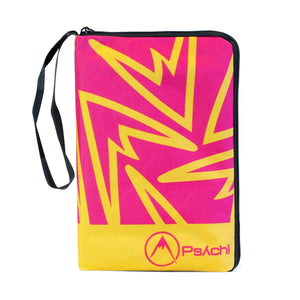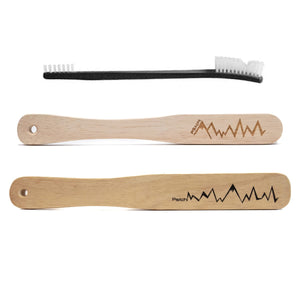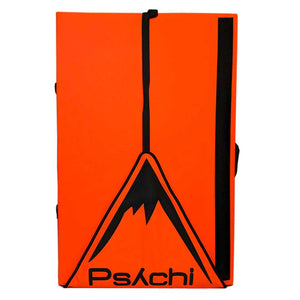TYPES OF CLIMBING EXPLAINED
When we think about the different types of climbing, we may first think of indoor bouldering and the gymnastic feats of climbers leaping from hold to hold. We may conjure up images of old school alpinism; mountaineers scaling peaks in the Alps or the Himalayas. We may think back to gripping the sides of our chair watching Alex Honnald’s free solo of El Capitan, in which case we’d be thinking about solo climbing, or free-soloing.
It may surprise you to know that there are over 20 different types of climbing and numerous different niches and sub-styles within the sport. So, what exactly are the different types of climbing, and what are the characteristics of each?
TRADITIONAL CLIMBING
Trad (traditional) climbing is a type of climbing where a 'lead' climber ascends a blank rock face, placing their own temporary protection as they climb higher. The gear that the lead climber places can then be removed once the climb is complete. Traditional climbing doesn't require permanent bolts to be drilled into the rock, as sport climbing routes do. With trad climbing, a second climber then removes the protection as they 'second' the route. In this way, the rock face is left in its natural state after the climb is completed.
AID CLIMBING
Aid climbing is a type of climbing where climbers use ‘aid’ to scale a rock face. They may attach ladders or other equipment such as wedge shaped pieces of metal to pull themselves up the rock. Aid climbing is usually employed when climbs become too difficult for a climber to complete using only the natural rock surfaces and their own strength.
SPORT CLIMBING
Sport climbing is a type of roped climbing where a climber scales a route using bolts that are already drilled into the rock face. The leading climber attaches their rope to these bolts as they ascend the rock using a device called a ‘quickdraw’. This system provides protection for the climber should they fall. Sport climbing and traditional climbing typically involve a belayer, who will pay out rope, take in any slack in the system and catch any falls should they need to.
TOP ROPING
Top roping involves setting up an anchor at the top of a route and running a rope through that anchor and back to the ground, where a belayer will take in any slack that is created as the climber climbs the route. As the climber is always securely attached by their rope to the anchor point above, top roping is a less daunting way for beginner climbers to get used to the sport. Top roping is a popular style of climbing in indoor gyms, and auto belays allow climbers to top-rope without the need of a belayer.
SPEED CLIMBING
Speed climbing is a relatively new discipline in climbing and simply requires the climber to climb a standardised route as fast as possible. Speed climbing is a competitive type of climbing and will be one of the disciplines of competition climbing included in the 2021 Olympics, alongside bouldering and sport climbing.
BOULDERING
Unlike sport climbing, traditional climbing or top roping, bouldering is a type of unroped climbing where climbers climb on smaller rocks over crash pads called bouldering mats. As climbers won’t generally climb too high to complete bouldering problems, these mats are sufficient to break a fall. Boulders that do require the climber to climb very high are called high balls.
MOUNTAINEERING
Mountaineering, or Alpanism is a style of climbing that is undertaken to get to the top of a mountain or peak, and often undertaken in alpine environments. Mountaineering is completed over multiple pitches and takes many hours or days. Mountaineering employs a combination of many of the disciplines already mentioned, such as ice climbing, traditional climbing and aid climbing.
DWS
Like bouldering, DWS (Deep Water Soloing) is a form of climbing that does away with the need for protective ropes or equipment. DWS routers are climber over deep water, meaning any falls taken will be broken by the water! DWS is generally completed in the summer season.
ICE CLIMBING
Ice climbing involves climbing on ice or snow. It is typically done outdoors on natural ice formations and the climber uses ropes and protection systems similar to those used in traditional rock climbing. The climber will also likely need other equipment such as winter clothing, ice axes, crampons, harness and rope.
DRY TOOLING
Dry tooling as a form of climbing that uses ice climbing equipment such as ice axes to climb rock or artificials walls. The discipline is controversial amongst the climbing community due to its potential to damage the rock
COMPETITION CLIMBING
Competition climbing is a competitive form of climbing done on artificial structures and climbing walls. The International Federation of Sport Climbing (IFSC) organizes some of the most important international sport climbing competitions, including the Climbing World Championships and the Climbing World Cup.
FREE SOLO
Free solo climbing, or free soloing, is an extreme form of rock climbing, where the climber scales rock faces without any external equipment, protection or gear. Free soloing is incredibly dangerous, and has been fatal for those attempting it. Free soloing has recently come to the attention of mainstream media following Alex Honnald’s free solo of El Capitan, a big wall in Yosemite.
Whilst there are many different types of climbing, most of the technical skills needed are transferable over the different disciplines. A good understanding of basic rope work and the use of climbing equipment will help you on your way to enjoying all of the different styles of climbing covered.





































